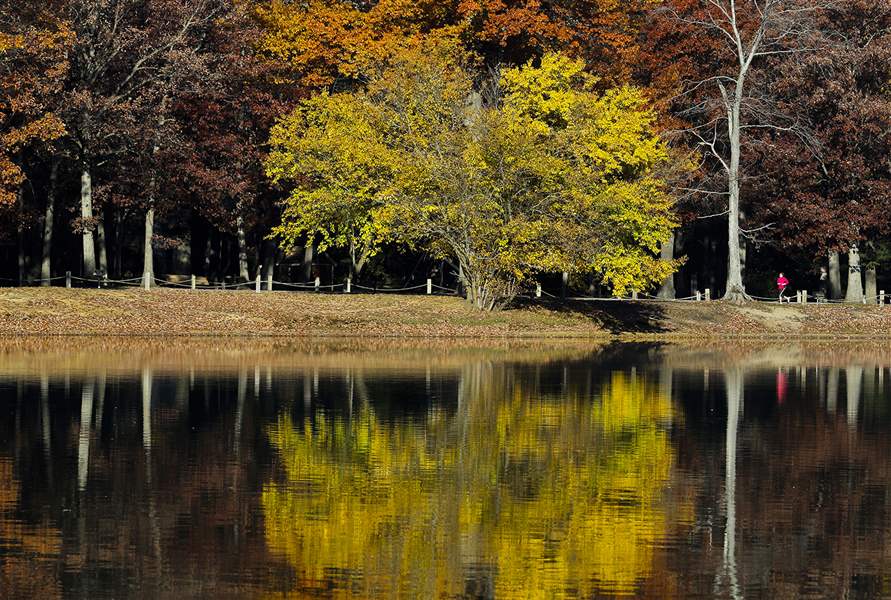
Fall colors arrive a little later this year
10/8/2017
Peak fall color time for southeast Michigan and northwest Ohio is usually in mid-October through the end of the month. But the recent heat wave has thrown the timing off just a bit.
THE BLADE
Buy This Image

I know you love snapping those fall color pictures, but are you having a hard time finding the trees with the tips lighting up with color? Well Mother Nature has slowed them down a bit.
Peak fall color time for southeast Michigan and northwest Ohio is usually in mid-October through the end of the month. But the recent heat wave has thrown the timing off just a bit.
Ohio.org says we are just starting to see the tips make their changes and not close to peak color season. If you really want to see fall color right now, you will have to head to northern Michigan, according to Michigan.org. Trees are at peak color as you get closer to the Mackinaw Bridge. By their calculations, southeast Michigan and the Lake Erie coast will be nearing peak color after Oct. 18. The rest of northwest Ohio will tumble into peak color after Oct. 23.
First to go
Beech, hickory, and birch are usually the first to turn yellow, orange, and brown. They turn these colors because their chemical leaf structure contains carotenoid pigments. Trees that create a lot of sugar like sweetgum, dogwood, maple, and oak will turn red and purple. They have anthocyanin pigments in their leaves and will turn darker colors.
Yellows come from xanthophyll pigments, and the brown colors are usually the end of the leaf’s life cycle. These are the tannins in the plant and are considered its waste product. These showy colors are always there, but when the tree is growing strong in the spring and summer, the leaves are flooded with green chlorophyll. When the tree starts to slow down and not send sugar water through its system as fast, the other colors will show up.
Other colors
Your trees aren’t the only ones going through fall changes. Garden plants like purple grapes, violets, beets, and red apples also contain anthocyanin pigments. Pansies, hollyhocks, and carrots get their yellow coloring from the xanthophyll pigments just like the leaves on a tree.
Scientists think these pigments protect the plant from the sun, kind of like sunscreen, because the sugar in those pigments lowers the freezing point and also gives the plants a bit of frost protection.
Turning on the color
Temperature and length of daylight are triggers for the deciduous trees to tumble into dormancy. The leaves are reacting to the tree’s natural process for winter hibernation. The best leaf-turning weather is to have bright days and cold nights.
As a meteorologist, I can tell you that the lower sun angle and shorter days also cause a chemical change in plants. Leaves start to turn colors because they get less sunlight. A leaf changing forecast would be highs in the mid-60s to low-70s and lows from the low-40s to mid-30s.
Here it comes
Keep the camera handy. Days are already shorter, and we know the trees will be ready to give you that autumn light show. I’m sure it will be worth the wait!
Contact Kelly Heidbreder at: getgrowing@gmail.com.